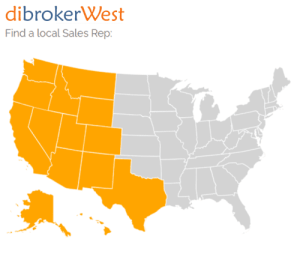
Disability Insurance Marketing Ideas
Predicting which marketing trends will truly benefit your business is a significant challenge in any field, including financial advisory and disability insurance. Leveraging the right marketing trends can give you a competitive edge and create new avenues for business growth and reputation building.
Below are top ideas that we believe will improve your marketing efforts. These ideas are not only current but they also suggest broader shifts in how financial advisors will interact with clients in the future. Let’s explore these strategies that can help you stay ahead.
1. Create ‘Zero-Click’ Social Media Content
Zero-click content refers to creating posts that provide valuable information directly on social media platforms. Historically, the goal of social media marketing was to get users to click a link to your website. Trends are showing that providing more complete social media posts is having a bigger impact. For example, instead of sharing a link to your latest blog, summarize the key points within the post itself and add a link for those interested in reading more.
This strategy aligns with the algorithms of popular social media platforms, which prioritize content that keeps users engaged on their sites. While driving traffic to your website is important, zero-click content can significantly enhance your media strategy by:
- Increasing Visibility: Valuable content directly on social media is more likely to be promoted by the platform’s algorithm, expanding your reach beyond your existing followers.
- Capturing Attention: Bite-sized, valuable information grabs attention and keeps users engaged. This can lead them to explore more and eventually visit your website for additional information.
- Building Trust and Credibility: Consistently providing valuable content establishes you as a thought leader, making your audience more likely to engage with your future posts and visit your website.
Think of zero-click content as an appetizer that grabs your audience’s interest, leading them to the main course—your in-depth content on your website.
2. Leverage Artificial Intelligence (AI)
AI can be a powerful tool in creating engaging social media content. Summarizing long-form content for social media can be time-consuming, but AI can help streamline this process. AI has advanced significantly in processing and understanding human language, offering exciting possibilities for generating ideas and creating content.
Think of AI as an assistant to help you brainstorm post concepts, extract key takeaways from your articles and craft concise summaries for social media. This allows you to focus on higher-level strategy while ensuring your content speaks directly with your audience.
If you’re struggling with blog post inspiration, AI can help by generating potential topics and suggesting outlines based on your target audience and desired themes. Tools like ChatGPT, Claude AI, Google’s Gemini and Grammarly’s AI can assist in this process.
3. Create Short Videos
Short, entertaining videos are hot right now! Think about the popularity of platforms like YouTube, TikTok, Instagram and Facebook. Financial advisors can utilize short-form videos to communicate with clients and prospects. These videos can effectively engage your audience with financial advice, investment tips, information about insurance products and more. The icing on the cake is if your content goes viral – reaching people
Short-form videos can be integrated into various content formats—embedded in blogs, included in emails, or shared on social media. They enhance your content and can promote it further. Consider repurposing snippets from longer videos, like webinars and podcasts into short clips to promote the original content.
4. Host Webinars and Podcasts
Expanding on the idea of short videos, webinars and podcasts are an excellent way to reach prospects and turn them into clients. Although very similar, there are minor differences between webinars and podcasts:
- Webinars are usually live events (initially) and podcasts are pre-recorded. A live webinar can be turned into a podcast after the live event has ended.
- Webinars usually feature interactive elements like live chat, Q&A sessions, polls and surveys. Podcasts typically don’t include interactive elements.
- Webinars usually focus on specific topics whereas podcasts may cover a variety of topics under a broader theme.
- Webinars are more structured and professional while podcasts are more casual and conversational.
Either format can work well, depending on your audience Webinars and podcasts should focus on topics that interest your audience. However, it’s also helpful to feature content that’s related to your primary focus.
When planning a webinar or podcast, consider inviting guest speakers, especially from professional referral sources. Your webinars, podcasts and short videos should have good lighting and sound but they don’t have to be a big production with expensive equipment. Less formal, less professional presentations are usually more approachable.
5. Cultivate Professional Relationships
Many advisors already receive referrals from other professionals such as attorneys and accountants. However, few advisors have a formal strategy to consistently grow their network, track referrals and measure success. Going beyond the referral will have a bigger impact. Building mutually beneficial relationships with professionals from other industries can be highly effective. Here’s how to do it:
- Target the Right Professionals: Go beyond traditional sources like estate attorneys and CPAs. Consider professional partnerships that are mutually beneficial. Include insurance agents, investment/retirement managers, bankers, stockbrokers, real estate agents and executive business coaches.
- Build Genuine Relationships: Referrals are great but relationships are much better, offering more value to both parties. Co-host educational workshops, provide guest articles, or connect your professional partners with others in your network.
- Share Valuable Content: Sharing content for the sake of sharing usually isn’t helpful. Sharing valuable content that’s relevant to your clients will have a bigger impact. Regularly share topics like market and product updates, financial planning tips and insights on new tax laws to stay on their radar.
- Include Professionals in Webinars: Most people like to be recognized for their knowledge or expertise in a topic. Many professional partners in your network would be flattered by an invitation to participate in your webinars. You can even go one step further and ask them to invite their contacts, enabling cross-promotion.
Conclusion
Marketing yourself and your business can be challenging. By incorporating new marketing trends like creating zero-click social media content, using AI effectively, creating short videos and webinars and building professional relationships, you can grow your business.
For more information about disability income insurance, growing your business and partnerships, please call your local Regional Sales Reps for details!

- The insured is unable to perform the duties of any occupation.
- The insured is unable to perform the duties of his regular occupation, but able to perform the duties of another occupation.
- The insured is able to perform the duties of his occupation but at a reduced capacity.
- The insured is fully recovered from a disability, back to work full time, but still suffering a loss of income.




